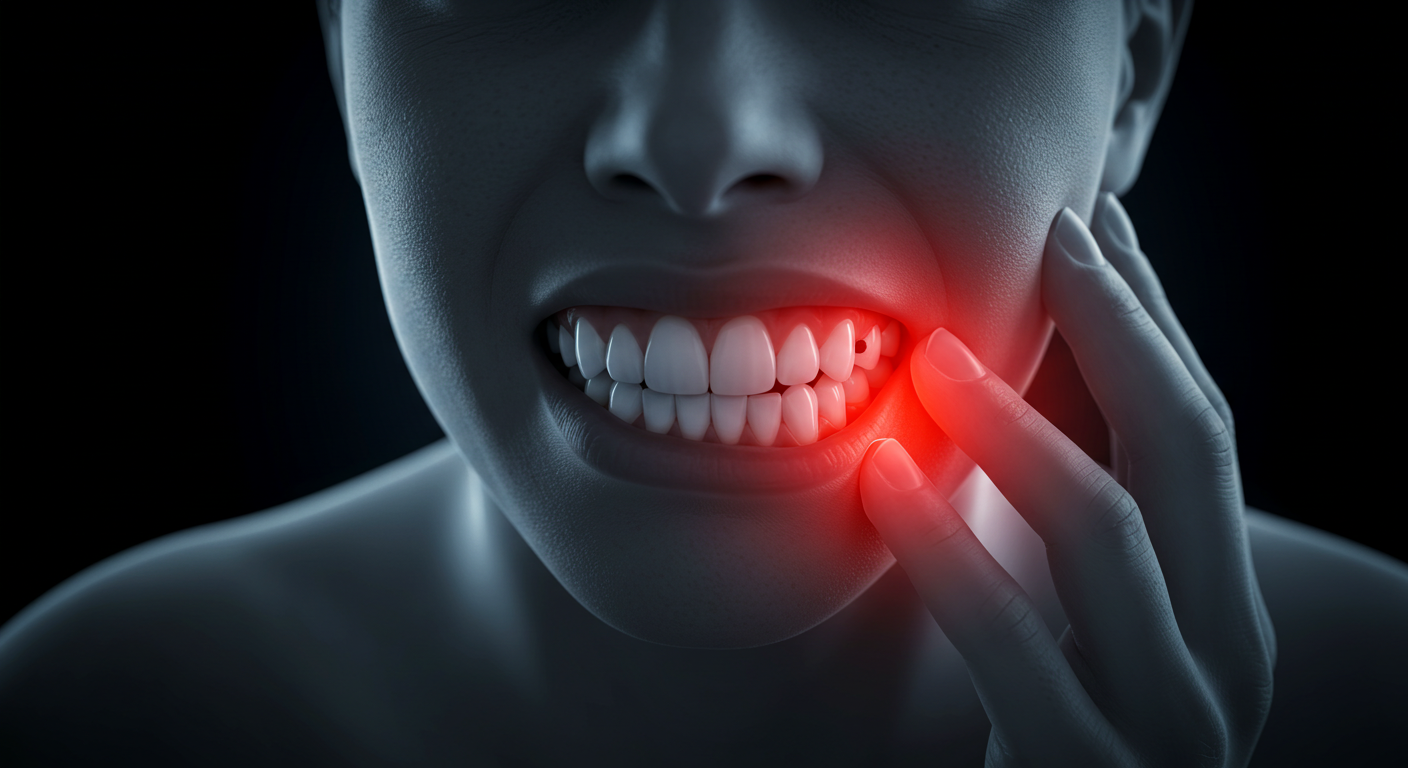
11th February 2025
Key Symptoms of Misaligned Dental Occlusion
Understanding Dental Occlusion: What Is It?
Dental occlusion refers to the way your upper and lower teeth come together when you close your mouth or chew. It’s essentially the relationship between your teeth when they’re in contact. A proper occlusion is crucial for maintaining oral health and overall well-being.
When your teeth align correctly, they distribute the forces of biting and chewing evenly, reducing wear and tear on individual teeth. This balance also helps protect your jaw joints and muscles from unnecessary strain. Imagine your teeth as a perfectly interlocking puzzle – when all pieces fit seamlessly, the entire system functions harmoniously.
However, when occlusion is misaligned, it can lead to a host of dental and health issues. Understanding the concept of dental occlusion is the first step in recognizing potential problems and seeking appropriate care. As you continue reading, you’ll discover the importance of proper alignment and how to identify signs of misalignment.
The Importance of Proper Dental Alignment
Proper dental alignment is more than just an aesthetic concern; it plays a vital role in your overall oral health and function. When your teeth are correctly aligned, you experience several benefits.
One of the most noticeable advantages is efficient chewing. When your teeth fit together properly, you can break down food more effectively, aiding digestion. This alignment also reduces the risk of tooth decay and gum disease since it is easier to maintain oral hygiene when teeth are in their proper positions. Speech clarity can also be affected by dental alignment. Misaligned teeth may impact pronunciation and speech patterns, making communication more difficult. Additionally, when teeth meet evenly, excessive wear is minimized, preventing damage and prolonging the longevity of your natural teeth.
A misaligned bite can contribute to jaw pain and headaches due to strain on the temporomandibular joints (TMJ). Proper alignment helps in maintaining a balanced facial structure, which can even impact breathing patterns. Some studies suggest that a well-aligned bite may reduce the risk of conditions such as sleep apnea.
Common Causes of Misaligned Dental Occlusion
Misaligned dental occlusion can arise from various factors, some of which are genetic, while others result from external influences.
- Genetics: Jaw size and tooth positioning are often inherited traits. If misalignment runs in your family, you may be more prone to developing occlusal issues.
- Childhood habits: Prolonged thumb-sucking or pacifier use can influence the development of dental alignment and lead to long-term effects.
- Tooth loss: Missing teeth can cause surrounding teeth to shift over time, altering your occlusion.
- Trauma: Injuries to the jaw or face can disrupt alignment, leading to bite irregularities.
- Improper dental work: Poorly fitted crowns, bridges, or fillings may contribute to misalignment.
- Bruxism: Chronic teeth grinding can wear down teeth unevenly, leading to further misalignment.
- Developmental conditions: Issues such as cleft palate can impact occlusion and require specialized treatment.
Recognizing the Signs of Misalignment
Recognizing misaligned occlusion early can prevent complications. Some signs are obvious, while others may be more subtle.
If you have difficulty chewing or biting, or if you find yourself favouring one side while eating, it could be due to misalignment. Jaw pain, clicking, or popping sounds when opening or closing your mouth may indicate temporomandibular joint (TMJ) issues. Frequent headaches, particularly in the morning, may be linked to muscle tension caused by a misaligned bite. Uneven wear on teeth is another indicator. If some teeth appear more worn down than others, it may be due to excessive pressure in certain areas. Increased sensitivity to hot or cold temperatures could also result from misalignment. In some cases, noticeable changes in speech patterns or difficulty pronouncing certain sounds can be a sign.
Facial asymmetry can sometimes develop from severe misalignment. If you experience any of these symptoms, consulting a dental professional can help identify the problem early and prevent further complications.
The Impact of Misaligned Occlusion on Oral Health
Misaligned dental occlusion can have far-reaching effects on oral health. One of the primary concerns is an increased risk of tooth decay. When teeth are misaligned, they create hard-to-reach areas where plaque and bacteria can accumulate, leading to cavities and gum disease.
Another consequence is accelerated tooth wear. Uneven pressure distribution can cause some teeth to wear down more quickly than others, potentially resulting in heightened sensitivity or even tooth fractures. Jaw joint problems are another major concern. Misalignment can put a strain on the temporomandibular joints, leading to pain, difficulty in movement, and even chronic discomfort.
Teeth that are subjected to excessive force are more likely to chip or fracture. Maintaining dental restorations, such as crowns and bridges, can also be challenging when teeth are not properly aligned. Some studies even suggest that dental misalignment may contribute to other health issues, such as poor posture and sleep disturbances.
Diagnosis of Occlusal Issues
Diagnosing occlusal problems accurately is essential for effective treatment. Dentists use several methods to assess bite issues.
- Visual examination: The dentist checks for misalignment and signs of wear.
- Bite analysis: A special paper is used to observe how teeth make contact when biting down.
- X-rays: Detailed images of the teeth and jaw help reveal underlying problems.
- Dental impressions: Models of the bite provide a thorough examination of bite dynamics.
- Digital scanning: Advanced technology creates precise 3D models of the teeth.
- Jaw tracking & EMG: These techniques measure muscle activity and analyze bite function.
Treatment Options for Misaligned Dental Occlusion
Once a diagnosis is made, the appropriate treatment plan will depend on the severity of the misalignment.
- Orthodontic treatments: Braces, clear aligners (Invisalign), and lingual braces reposition teeth.
- Restorative procedures: Crowns, bridges, and veneers correct structural issues.
- Occlusal adjustment: Reshaping certain tooth surfaces to improve alignment.
- Splint therapy: Night guards for grinding and stabilization splints for TMJ issues.
- Surgical interventions: Orthognathic surgery may be necessary for severe jaw misalignment.
- Myofunctional therapy: Exercises to improve muscle function and bite alignment.
Preventing Dental Misalignment
While some alignment issues are genetic, preventive measures can help maintain proper occlusion. Good oral hygiene is fundamental. Brushing twice daily, flossing regularly, and using an antiseptic mouthwash can reduce the risk of decay and gum disease, which can contribute to misalignment.
Regular dental check-ups allow early detection and intervention for developing issues. Wearing protective gear, such as mouthguards during sports, can prevent injuries that might affect alignment. Avoiding harmful habits like chewing on hard objects or nail-biting can also protect dental structures.
If you grind your teeth, seeking treatment for bruxism can prevent unnecessary wear. Stress management techniques, such as meditation or exercise, may help reduce grinding. Maintaining a balanced diet with sufficient calcium and vitamin D intake supports strong teeth and overall oral health.
When to See a Dental Professional
Knowing when to seek professional advice is crucial. Persistent jaw pain, difficulty opening or closing the mouth, frequent headaches, and noticeable bite changes warrant a visit to the dentist.
If you experience unexplained tooth sensitivity, chipping, or difficulty chewing, it’s advisable to schedule a consultation. A professional evaluation can determine the best course of action to restore proper alignment and prevent further issues.
Don’t let dental occlusion issues impact your well-being. Seeking timely care ensures that your smile remains healthy and functional for years to come. Book a consultation with a dental expert today and take the first step toward a properly aligned bite.
